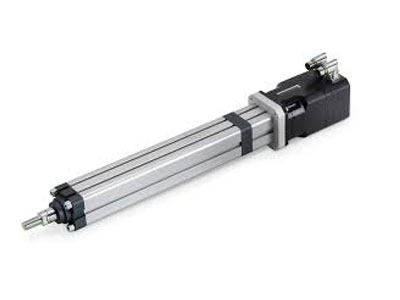Key Takeaway
The difference between pneumatic and rotary systems lies in their operation. Pneumatic systems use compressed air to create motion, while rotary systems focus on rotational movement. Each has its own advantages and is suited for different applications.
Understanding these differences can help you choose the right system for your needs, ensuring efficient and reliable operation. Consider factors such as power source, motion type, and application requirements when selecting a system.
Defining Pneumatic and Rotary Systems
Pneumatic systems are systems that use compressed air to power tools, machinery, and various components. These systems rely on air compressors, pneumatic valves, and actuators to deliver controlled bursts of air to perform work. Pneumatic systems are widely used due to their simplicity, speed, and reliability, making them ideal for applications in industries such as automotive, manufacturing, and food processing.
Rotary systems, on the other hand, refer to systems that use rotational motion to perform tasks. These systems can be powered by various energy sources, including electricity, hydraulics, or pneumatics. Rotary systems are commonly used in applications such as turning, drilling, and spinning, where precise rotational motion is necessary. Pneumatic rotary actuators, for example, use compressed air to generate rotational movement and are commonly used in automation, robotics, and valve control.
Both pneumatic and rotary systems are essential in modern industries, often working together to provide efficient, reliable, and precise motion control in automated systems, robotic applications, and other industrial processes. Their ability to perform complex tasks quickly and with minimal maintenance makes them invaluable in a wide range of applications.

Key Operational Differences
The primary difference between pneumatic and rotary systems lies in their operation and output. Pneumatic systems rely on compressed air to produce force or motion. When air is compressed and released, it moves mechanical components, such as pistons or actuators. Pneumatic systems are ideal for applications where a quick, smooth, and cost-effective solution is needed for generating force, often in linear motion. The compressed air used in these systems can be easily controlled and is ideal for high-speed, low-force operations.
On the other hand, rotary systems are designed to produce rotational motion, which involves the turning or spinning of components. These systems can be powered by electric, hydraulic, or pneumatic energy, but their focus is always on generating rotational movement. Rotary systems typically use motors, gears, or actuators to achieve continuous or intermittent rotation. They are often preferred in applications requiring high torque or precise rotational control. While pneumatic systems excel in applications requiring linear force, rotary systems are best suited for tasks that demand rotation, such as turning valves, positioning systems, or robotic arms.
Applications of Pneumatic Systems
Pneumatic systems are used across a broad range of industries, particularly where linear motion and rapid operation are essential. They are commonly found in manufacturing, material handling, and automation systems. In these settings, pneumatic cylinders or actuators are used to perform tasks like pushing, pulling, lifting, or pressing components. Pneumatic systems are favored in environments where high-speed motion is required and where there is a need to reduce the risk of electrical hazards.
In addition, pneumatic tools such as drills, wrenches, and hammers are used for their lightweight and high-speed capabilities. The automotive industry relies heavily on pneumatic systems for assembly lines, where machines are powered by compressed air to handle repetitive tasks like tightening bolts or lifting heavy parts. Pneumatic systems are also commonly used in the packaging industry to automate processes like filling, sealing, and sorting products due to their speed, safety, and simplicity.
Applications of Rotary Systems
Rotary systems are best known for their ability to provide continuous rotational motion, making them ideal for a variety of mechanical and industrial applications. Rotary actuators are one of the key components used in systems that require precise rotation, such as robotics, valve control, and CNC machinery. These systems are widely used in industries like robotics, where actuators help robots perform complex movements with high accuracy.
In addition to robotics, rotary systems are critical in automated machinery, conveyor systems, and power generation. Electric motors and hydraulic motors, both types of rotary systems, are used in machines requiring constant, reliable rotation. In the automotive industry, rotary systems are used in applications like steering mechanisms, windshield wipers, and engine control. Rotary valves are also an essential component in fluid handling, where the valve’s rotating mechanism controls the flow of liquids or gases.
Comparing Performance and Efficiency
When comparing pneumatic and rotary systems, the performance and efficiency of each system largely depend on the application. Pneumatic systems are generally more efficient in terms of speed and force generation for linear motion, but they may not be suitable for applications requiring high torque or precision in rotational movement. Pneumatic systems also have the advantage of being simple and cost-effective, with fewer mechanical parts that could wear out.
Rotary systems, especially those powered by electricity or hydraulics, tend to offer better performance in high-torque and high-precision applications. These systems can provide continuous and controlled rotational motion, which is essential in industries like manufacturing, robotics, and power generation. While rotary systems may be more expensive and complex compared to pneumatic systems, their ability to maintain stable and powerful rotation makes them indispensable in certain applications.
In terms of efficiency, pneumatic systems are often preferred in environments where speed and simplicity are the primary concerns, while rotary systems are chosen for their durability and ability to provide precise control in rotational tasks.
Conclusion
The difference between pneumatic and rotary systems lies in their operation and applications. Pneumatic systems use compressed air to create motion, while rotary systems focus on rotational movement. Understanding these differences is crucial for selecting the right system for specific applications.
By considering factors such as power source, motion type, and application requirements, users can effectively choose between pneumatic and rotary systems, ensuring optimal performance and efficiency in their processes.
